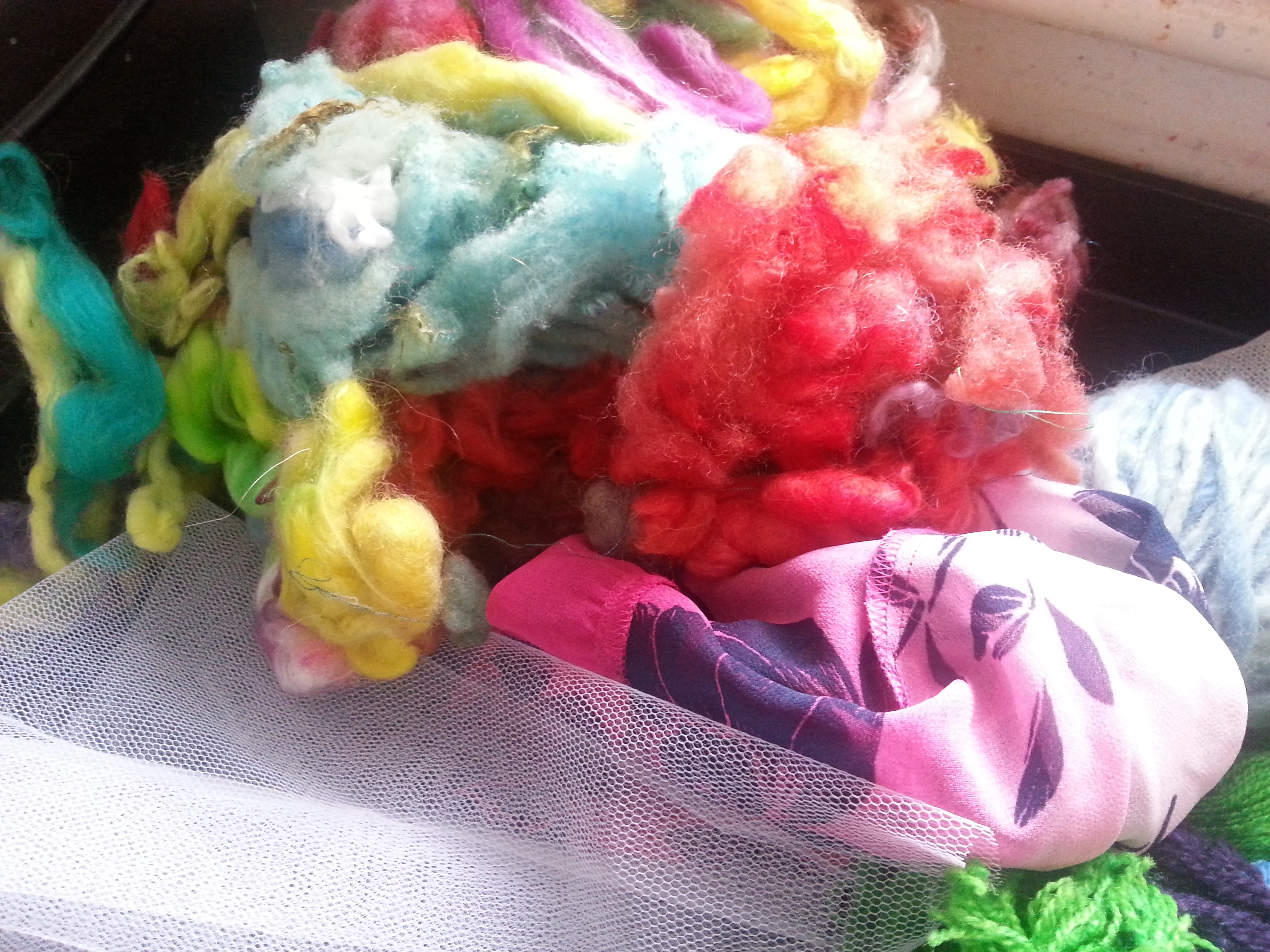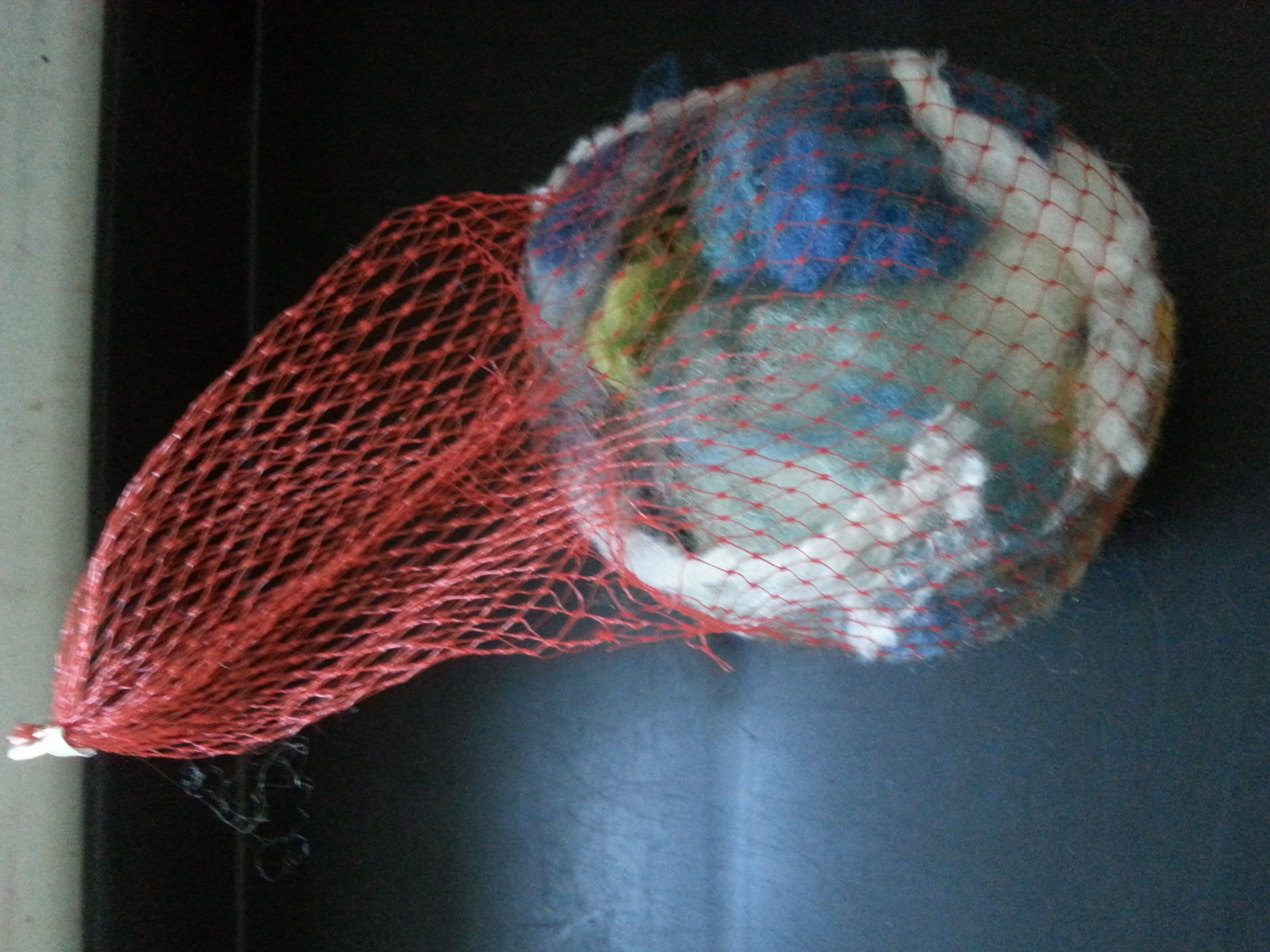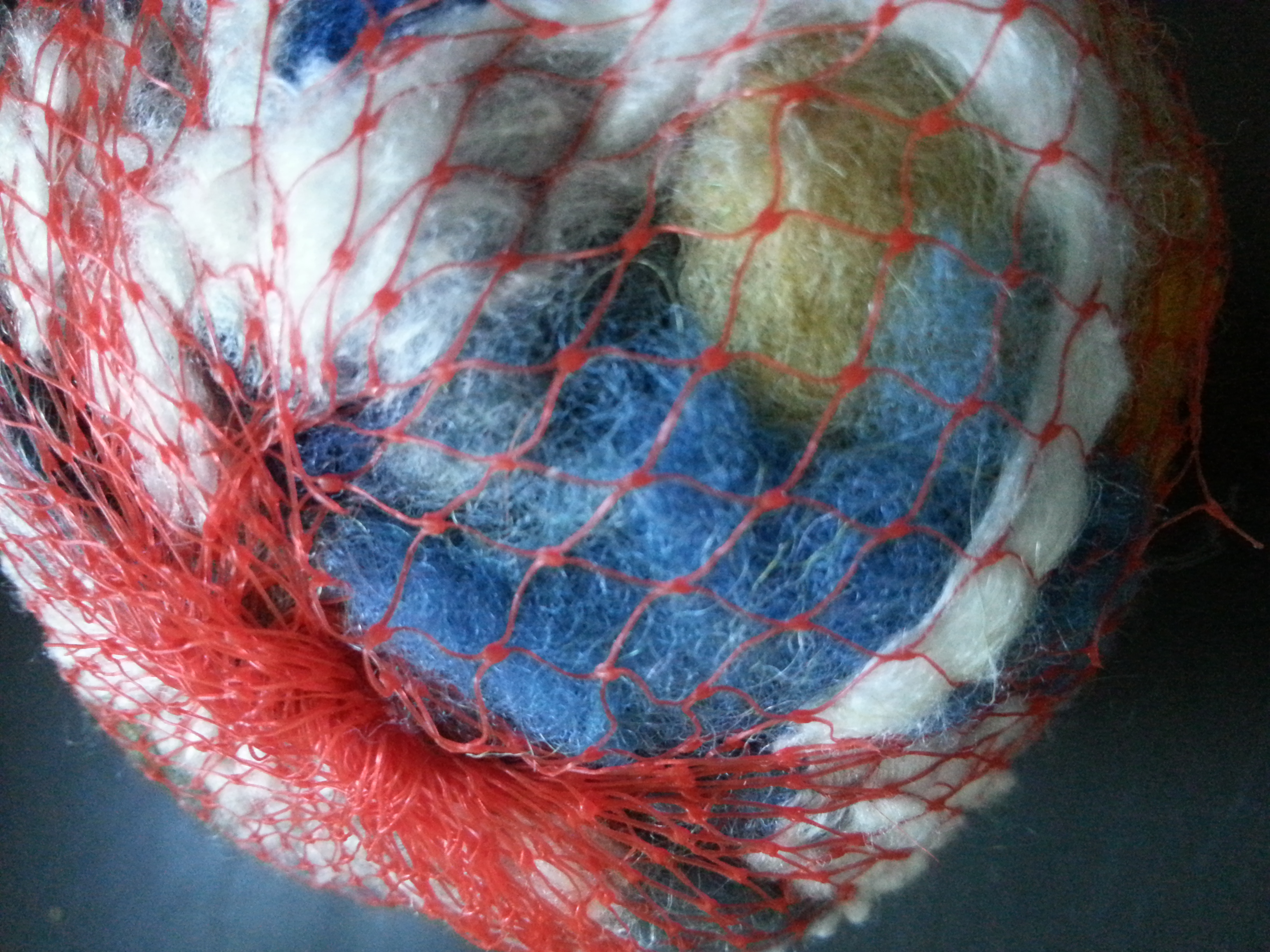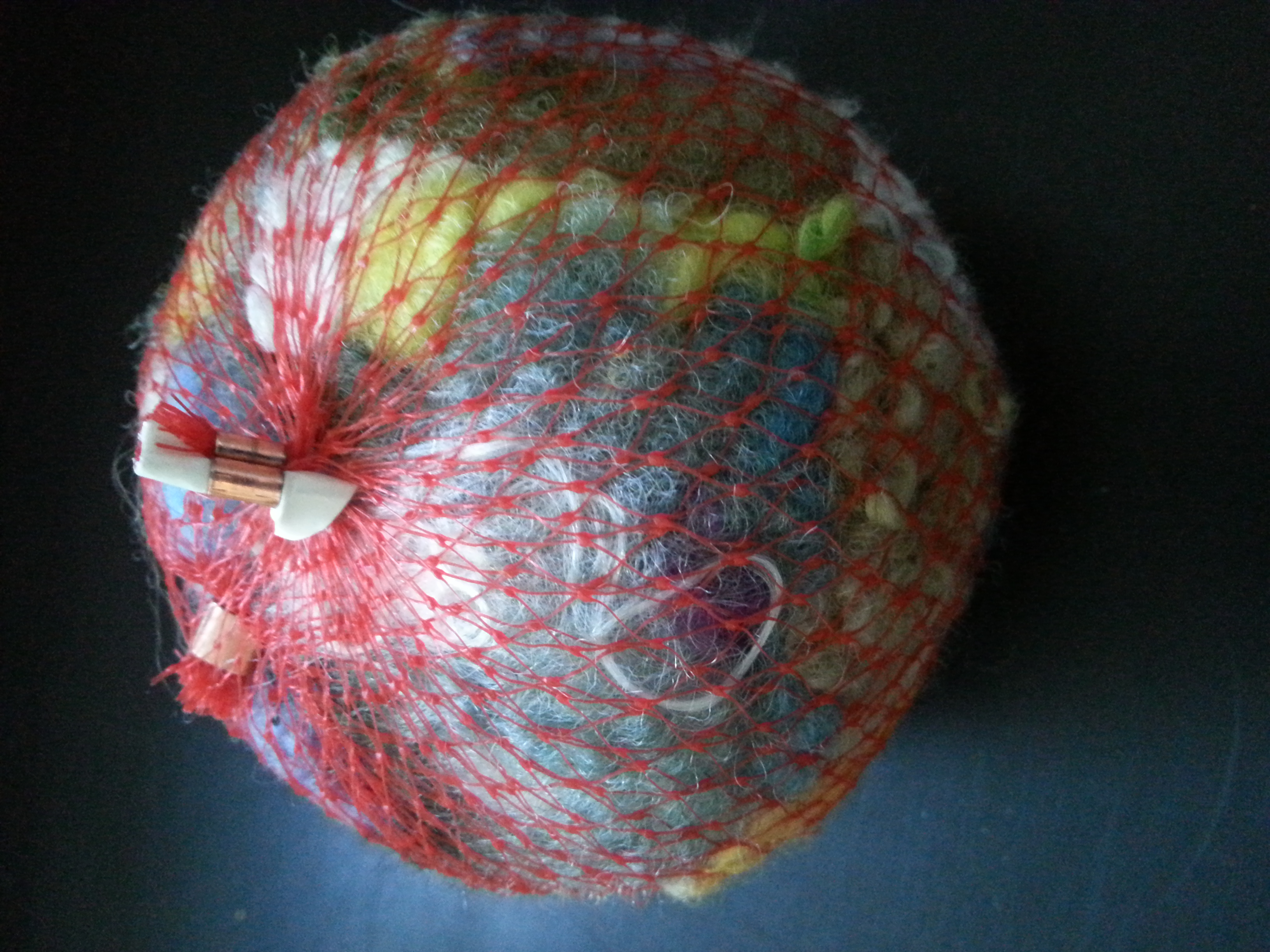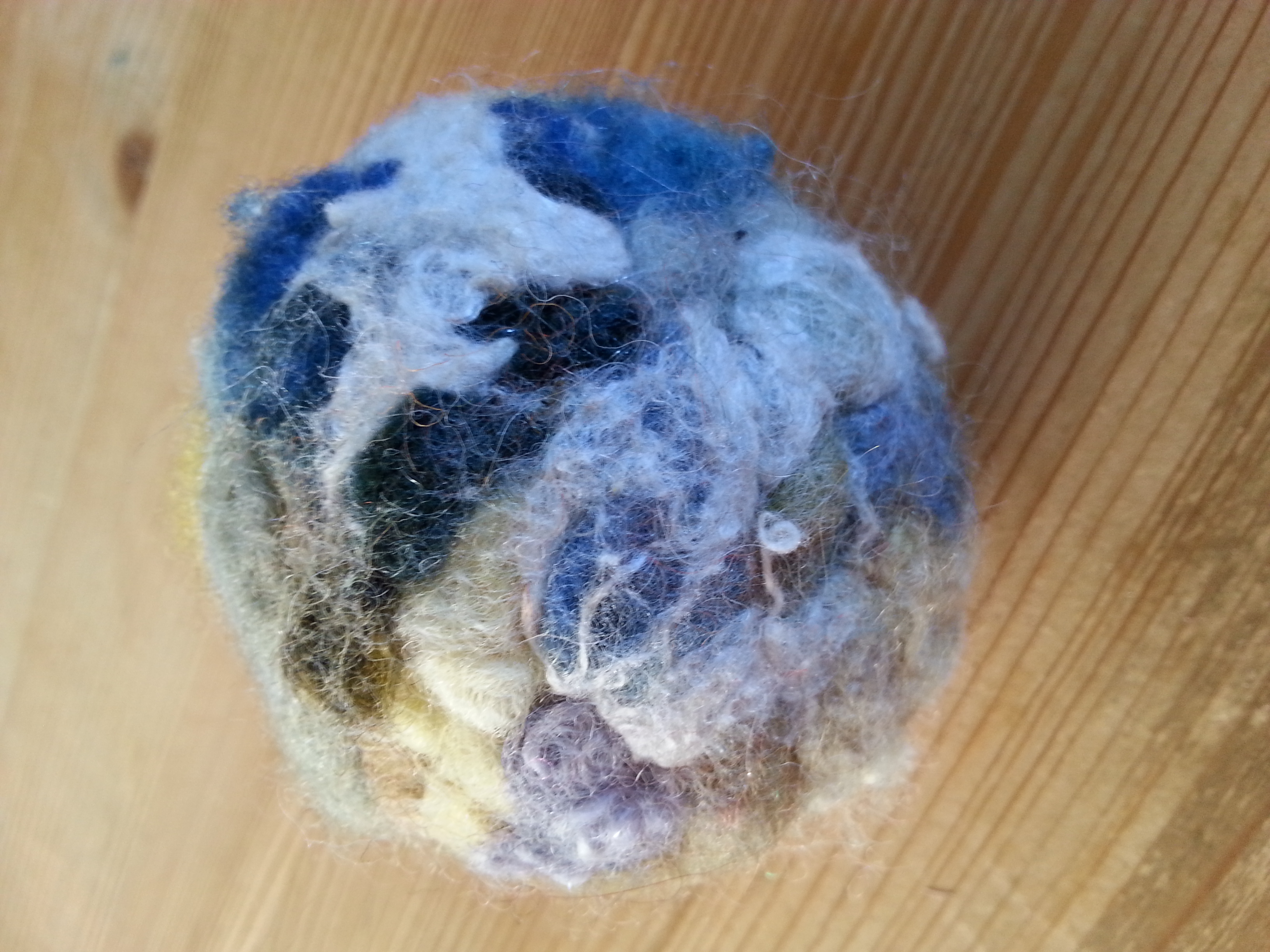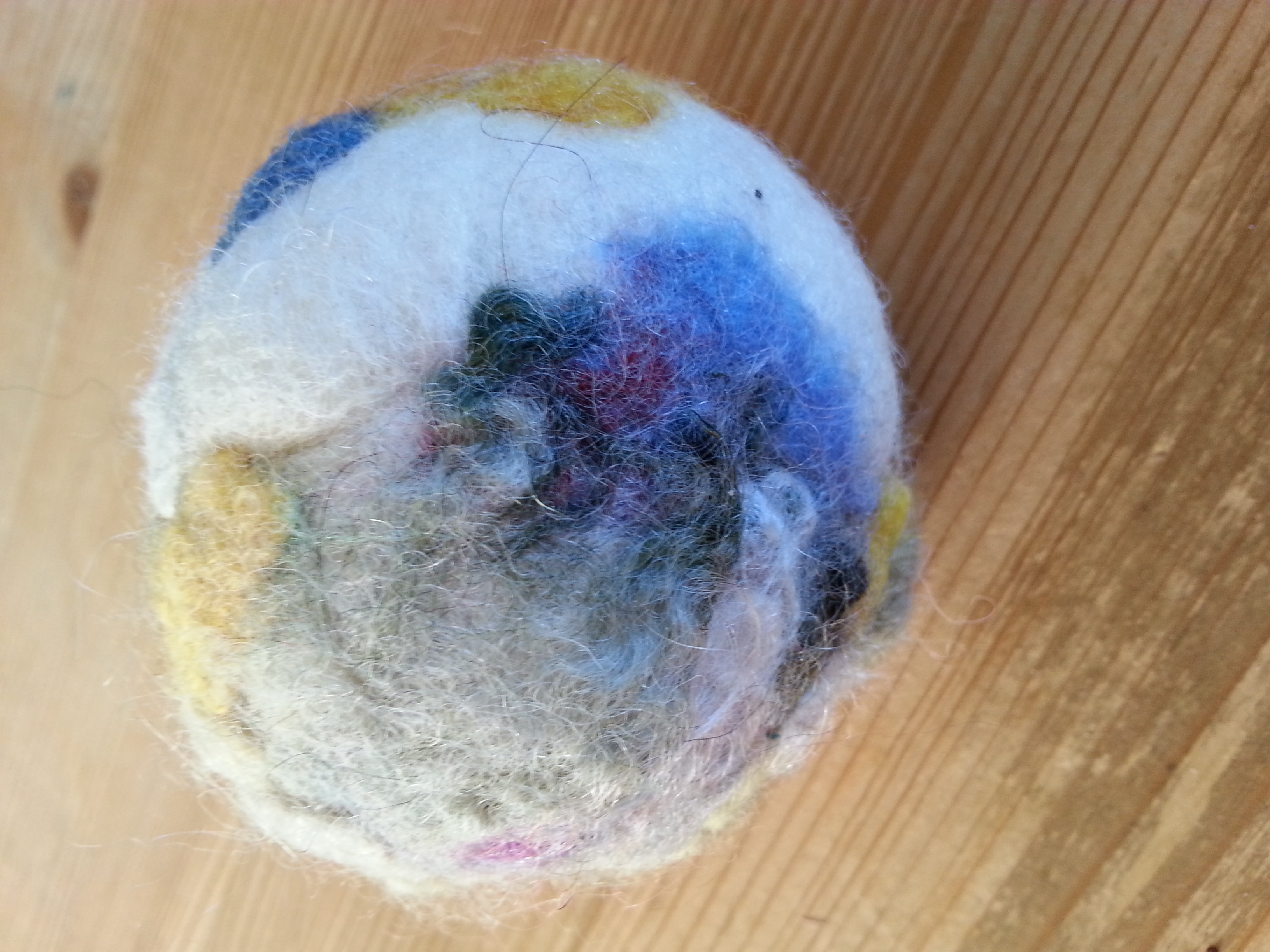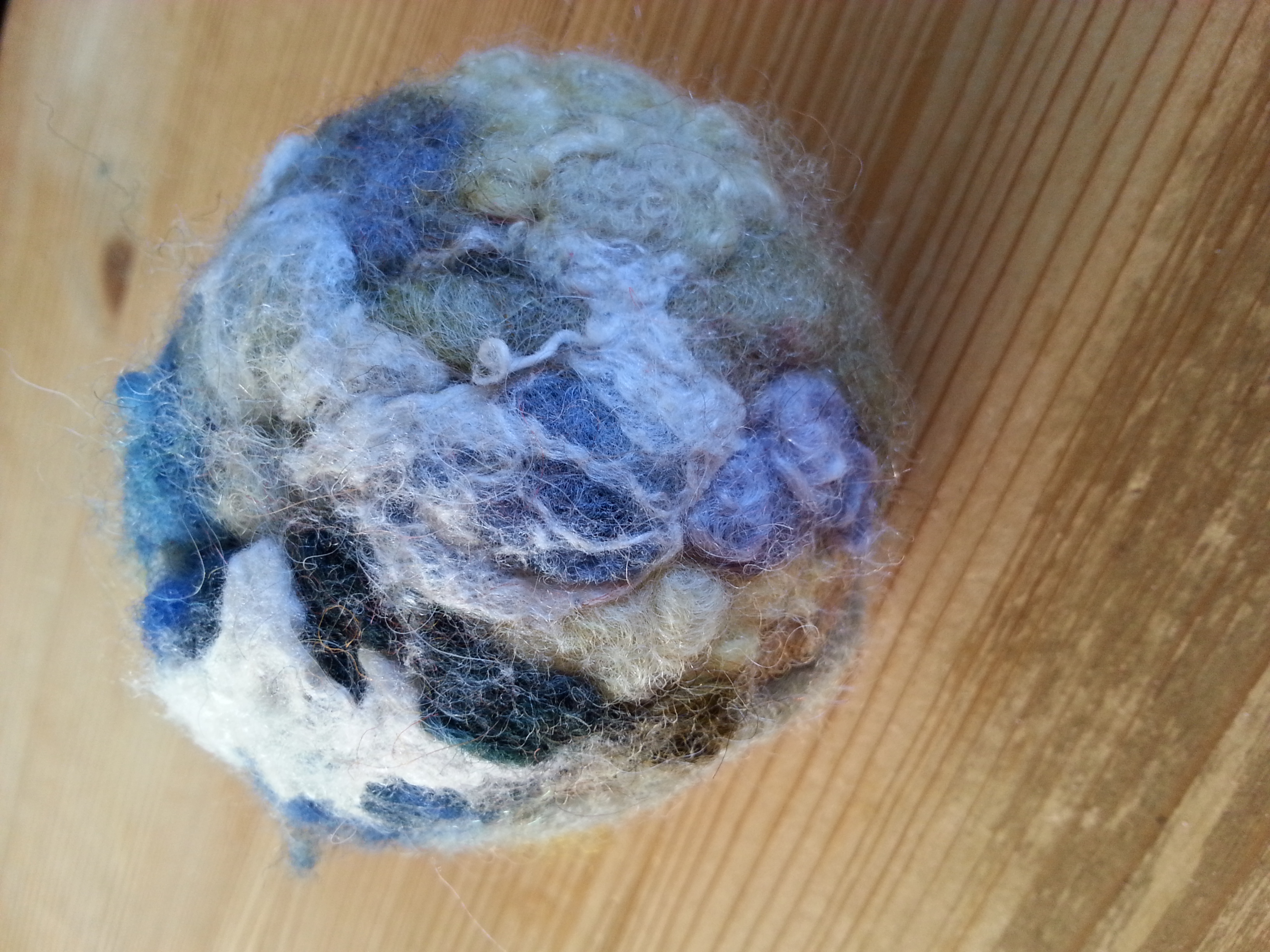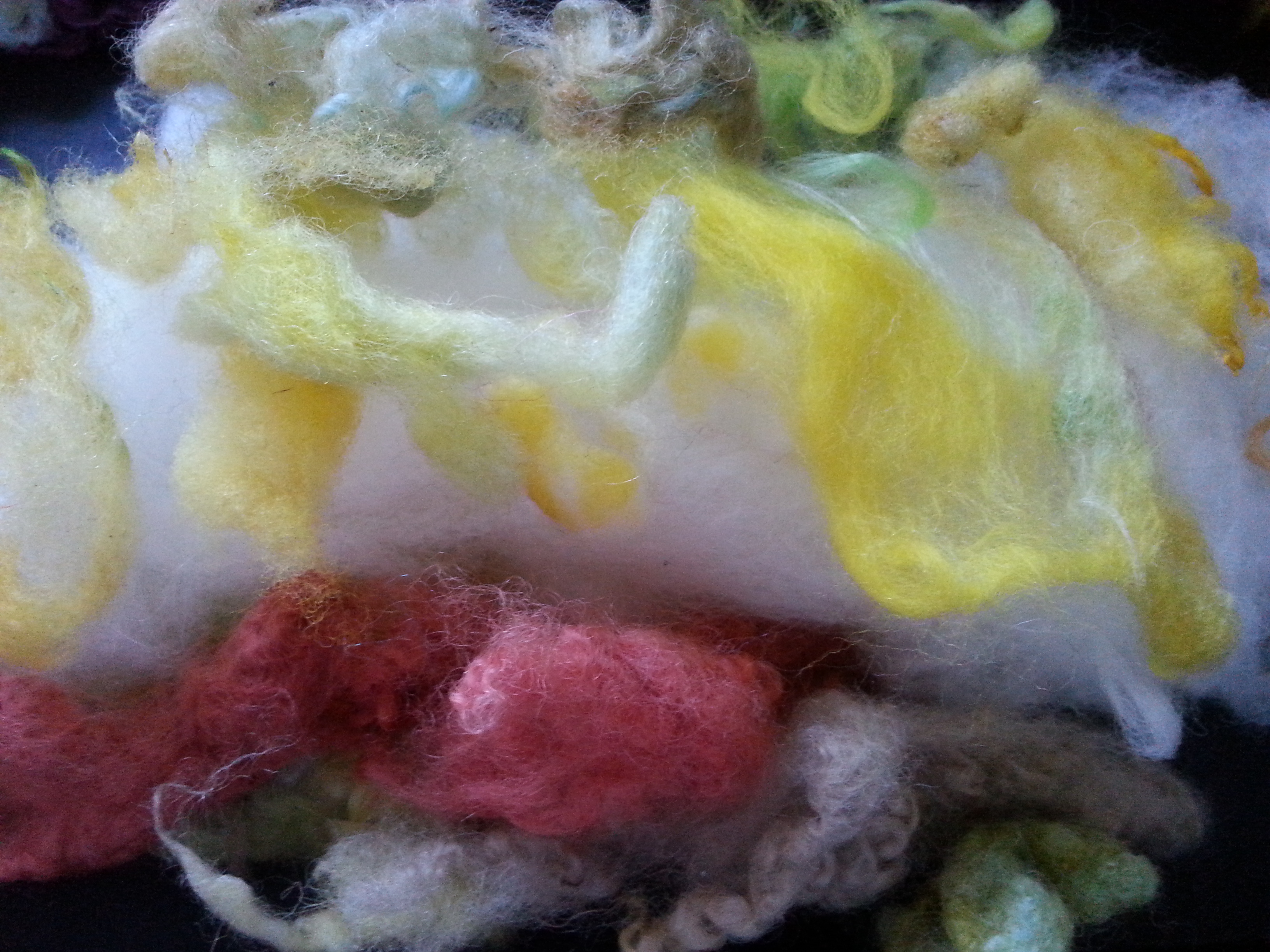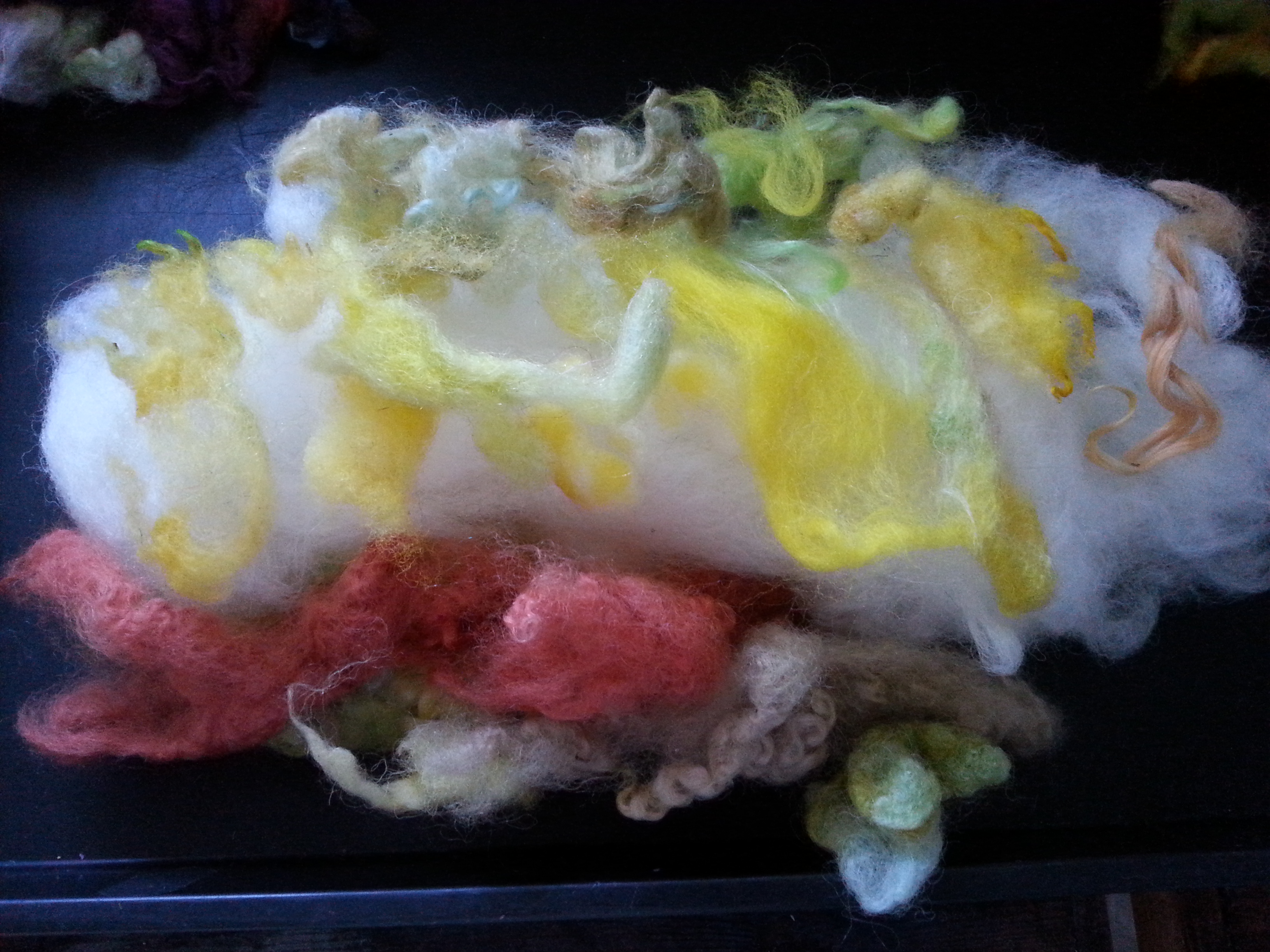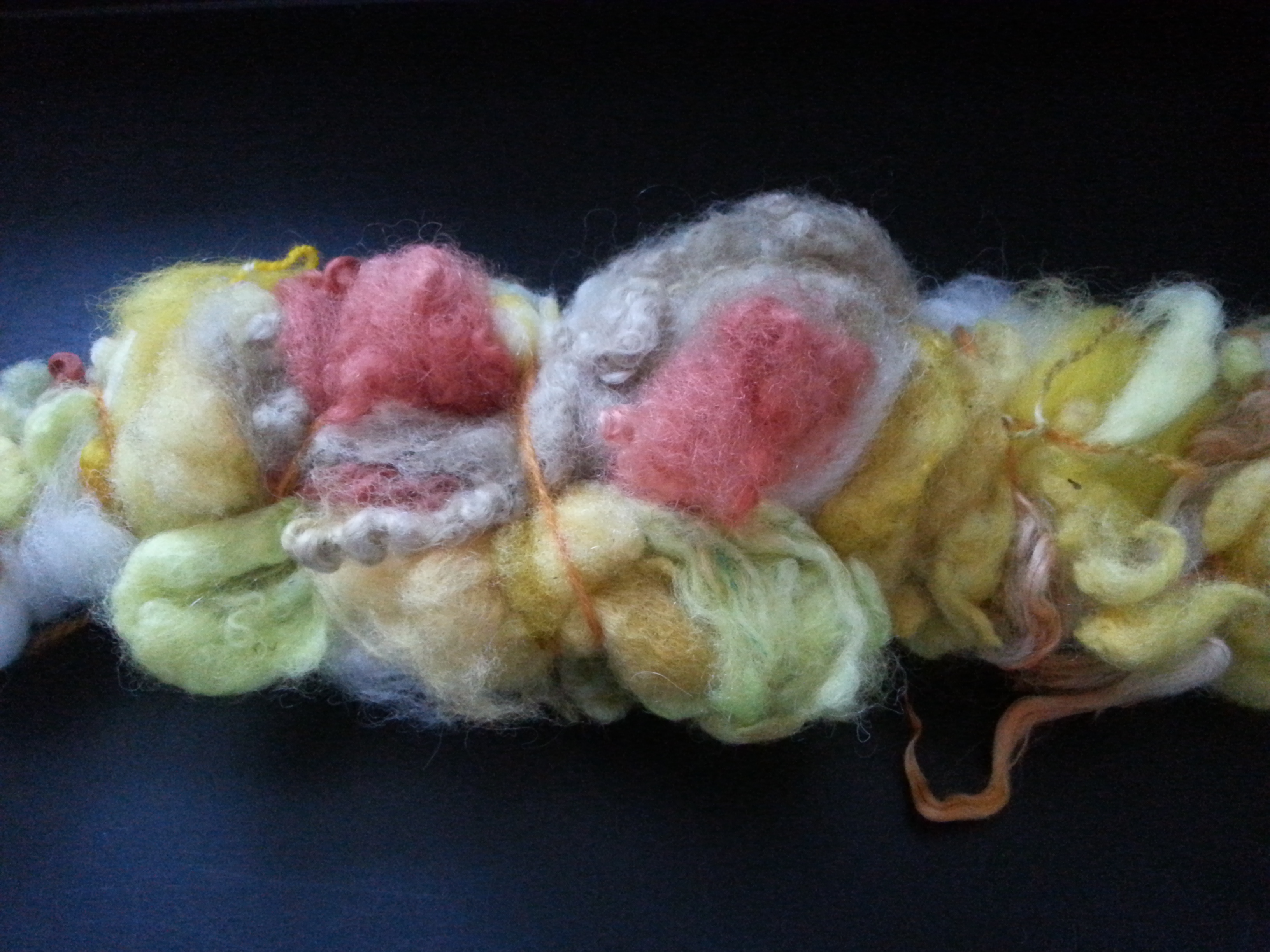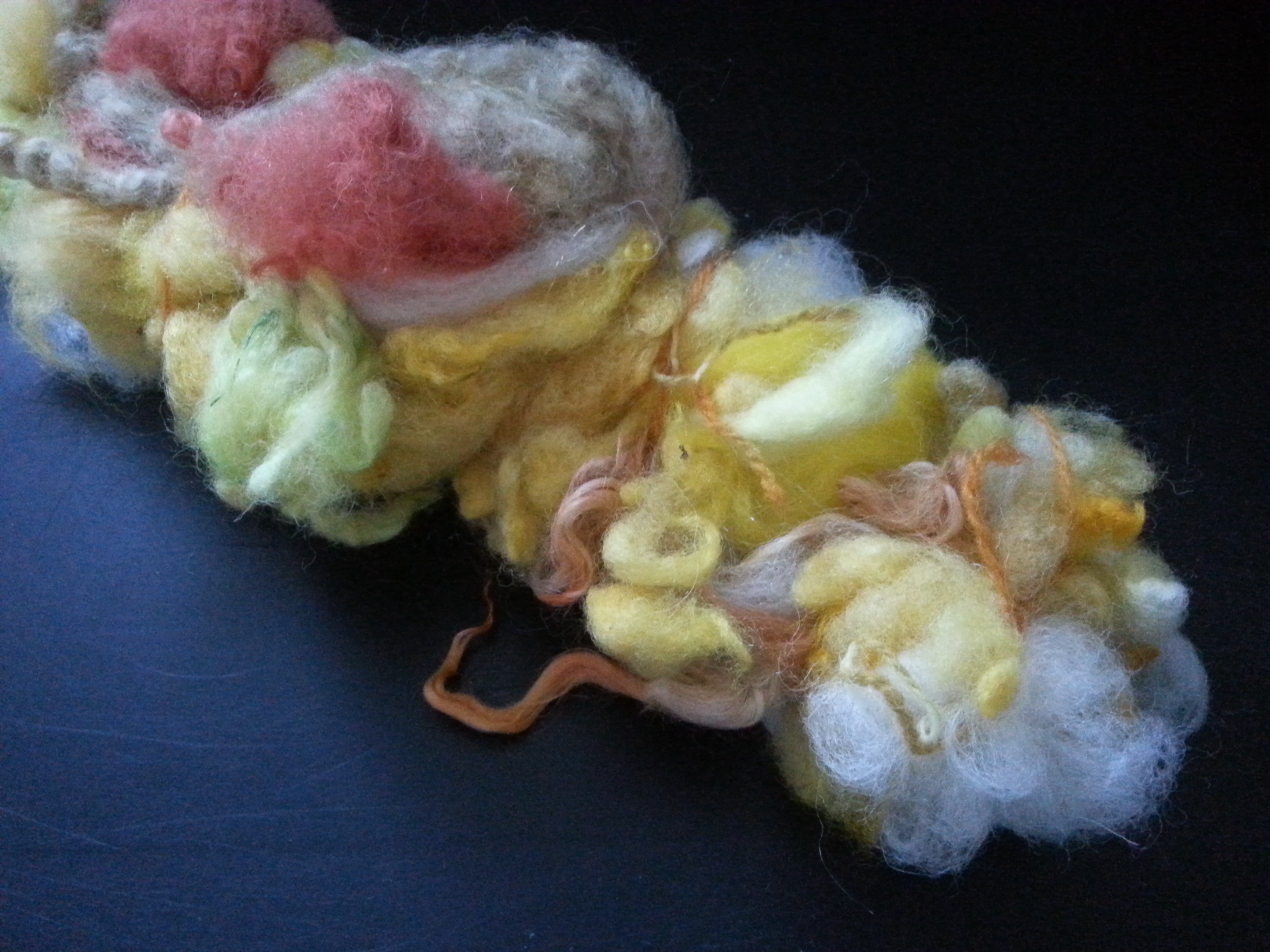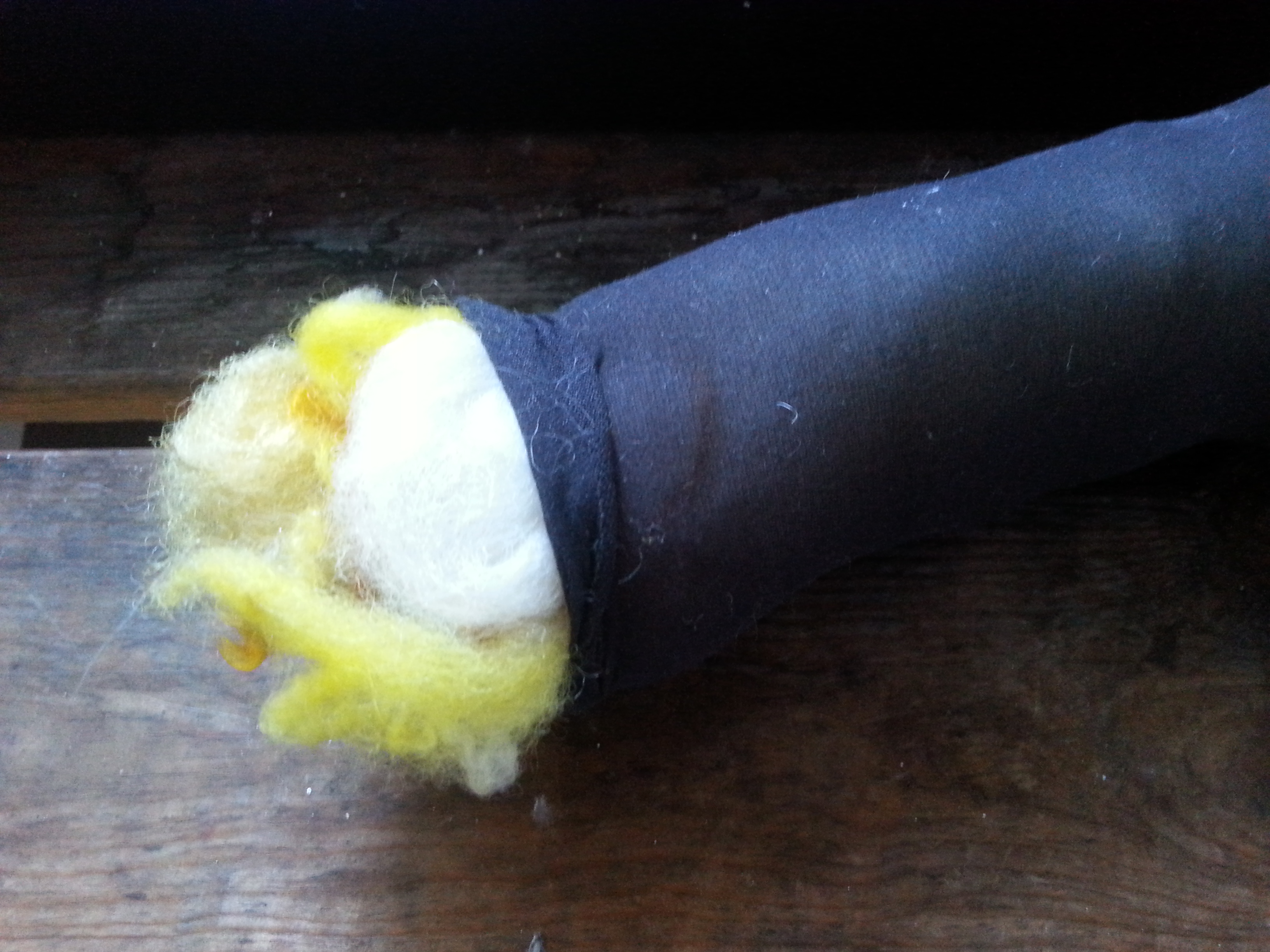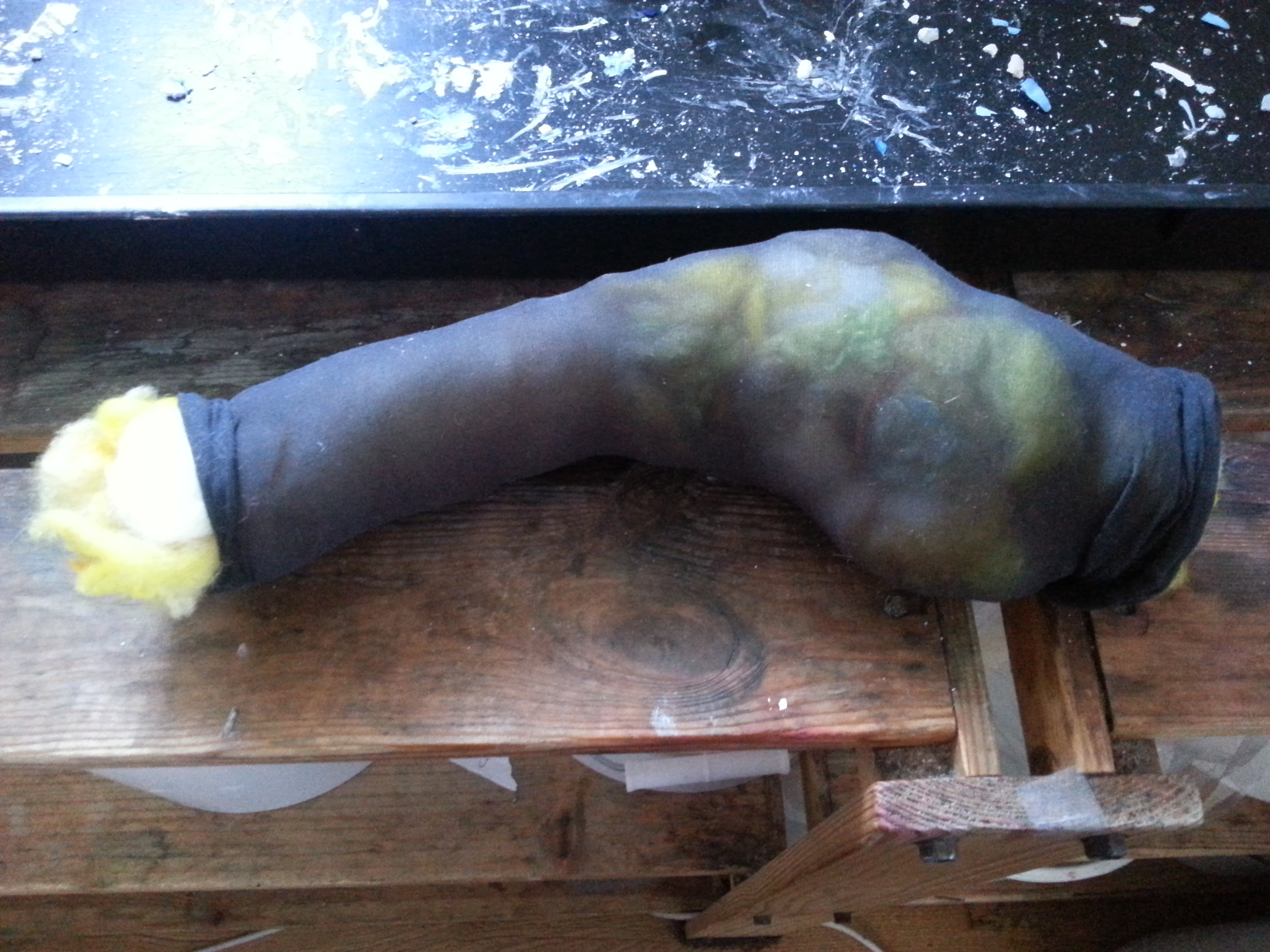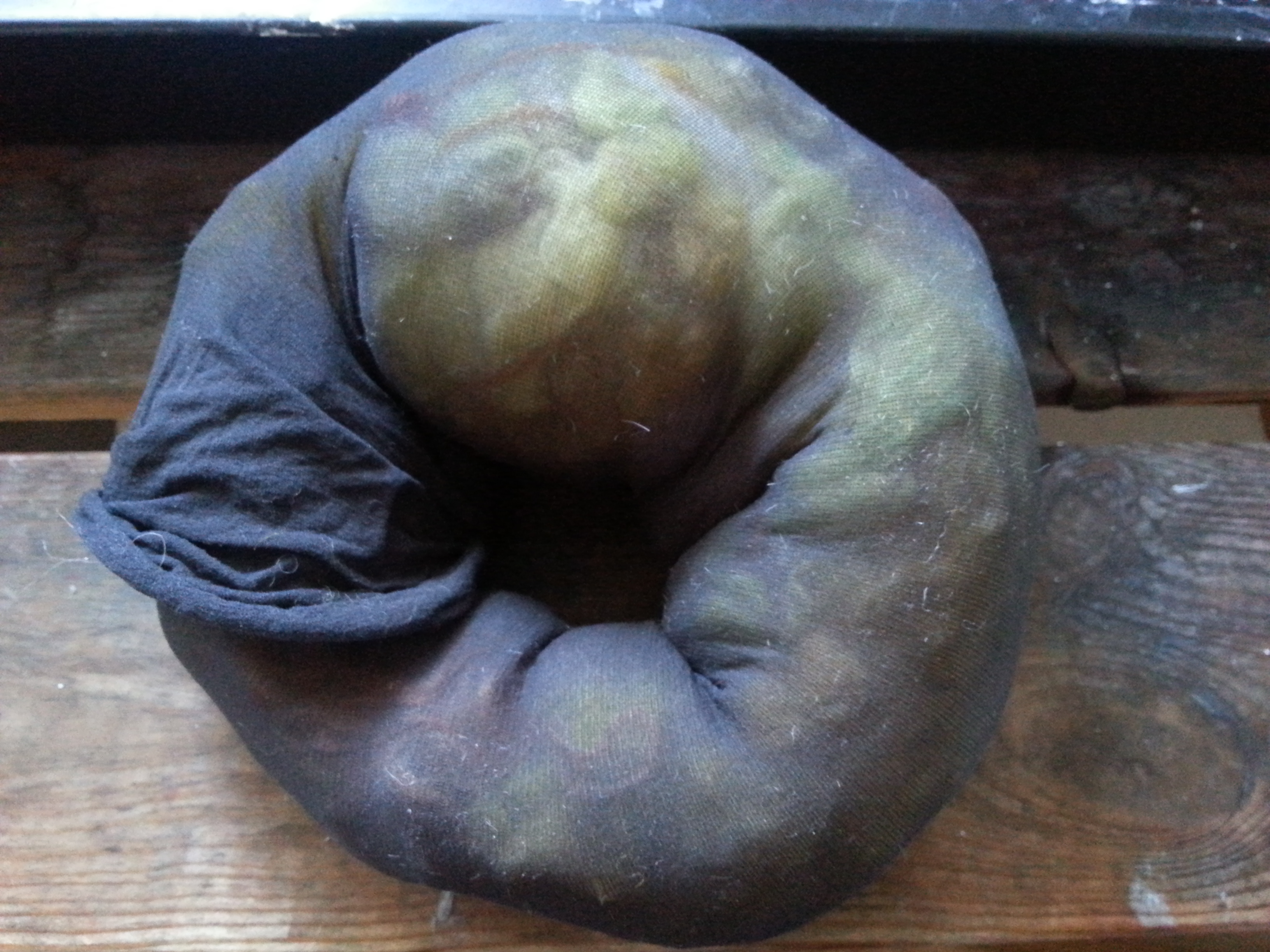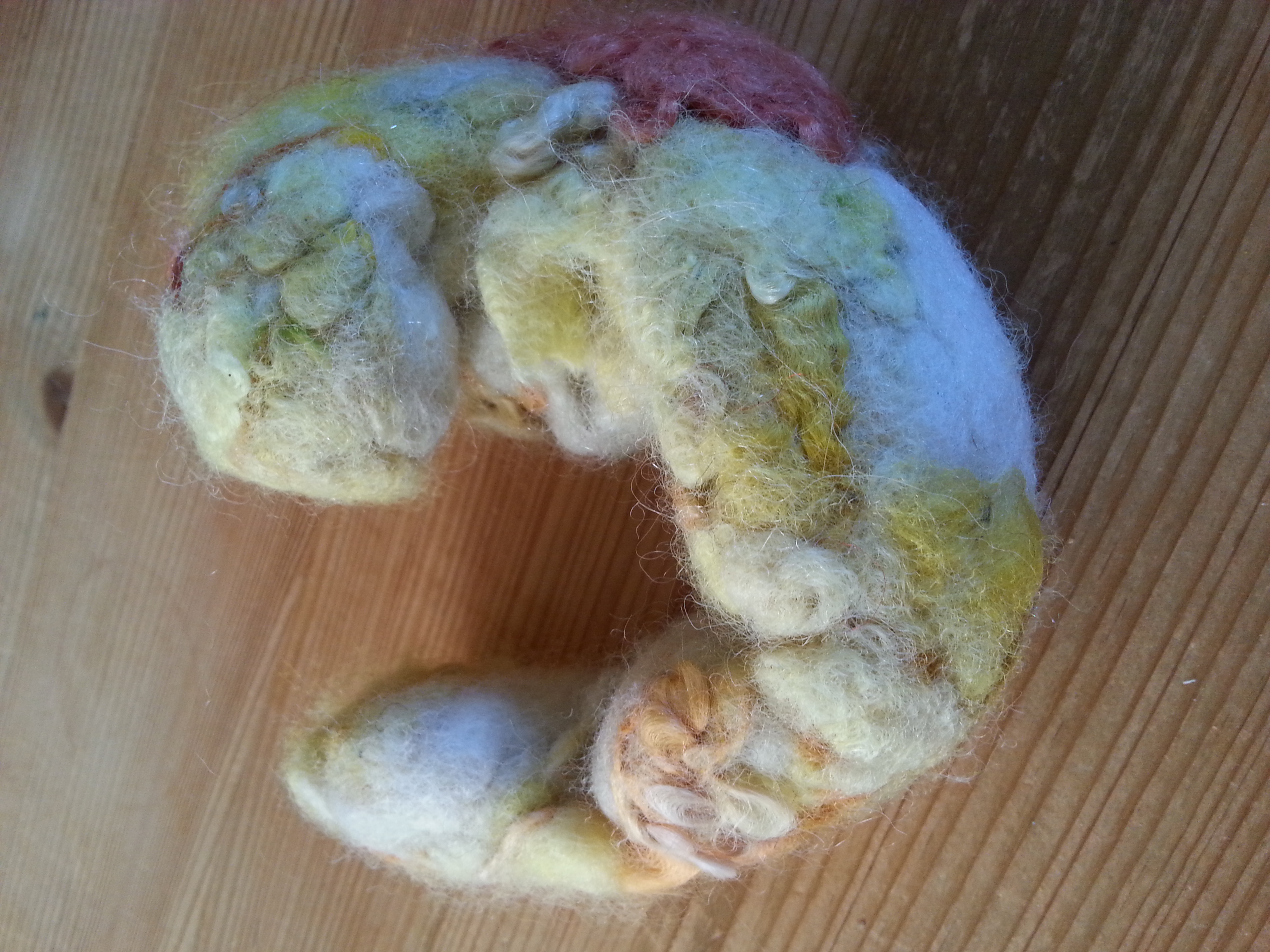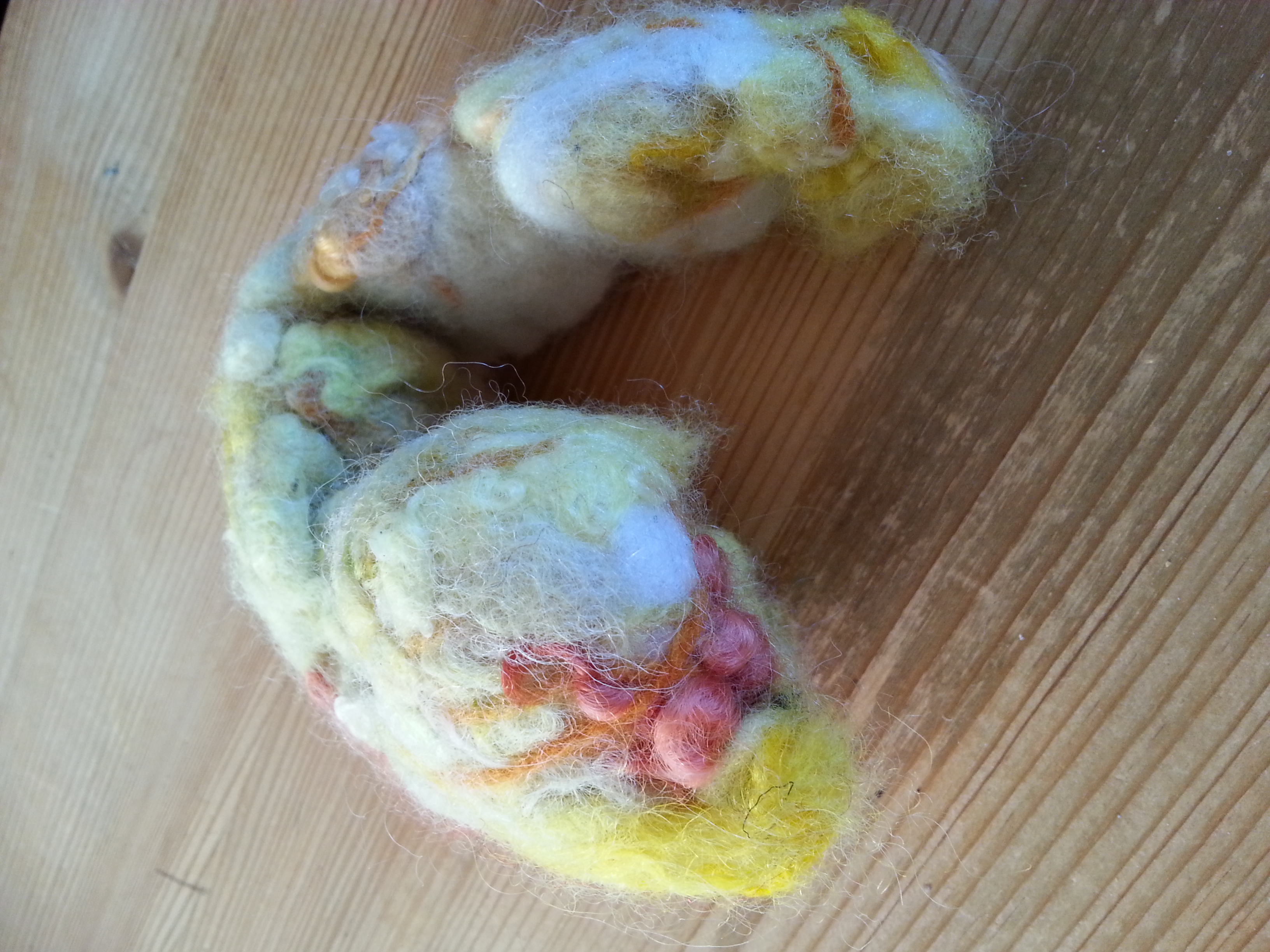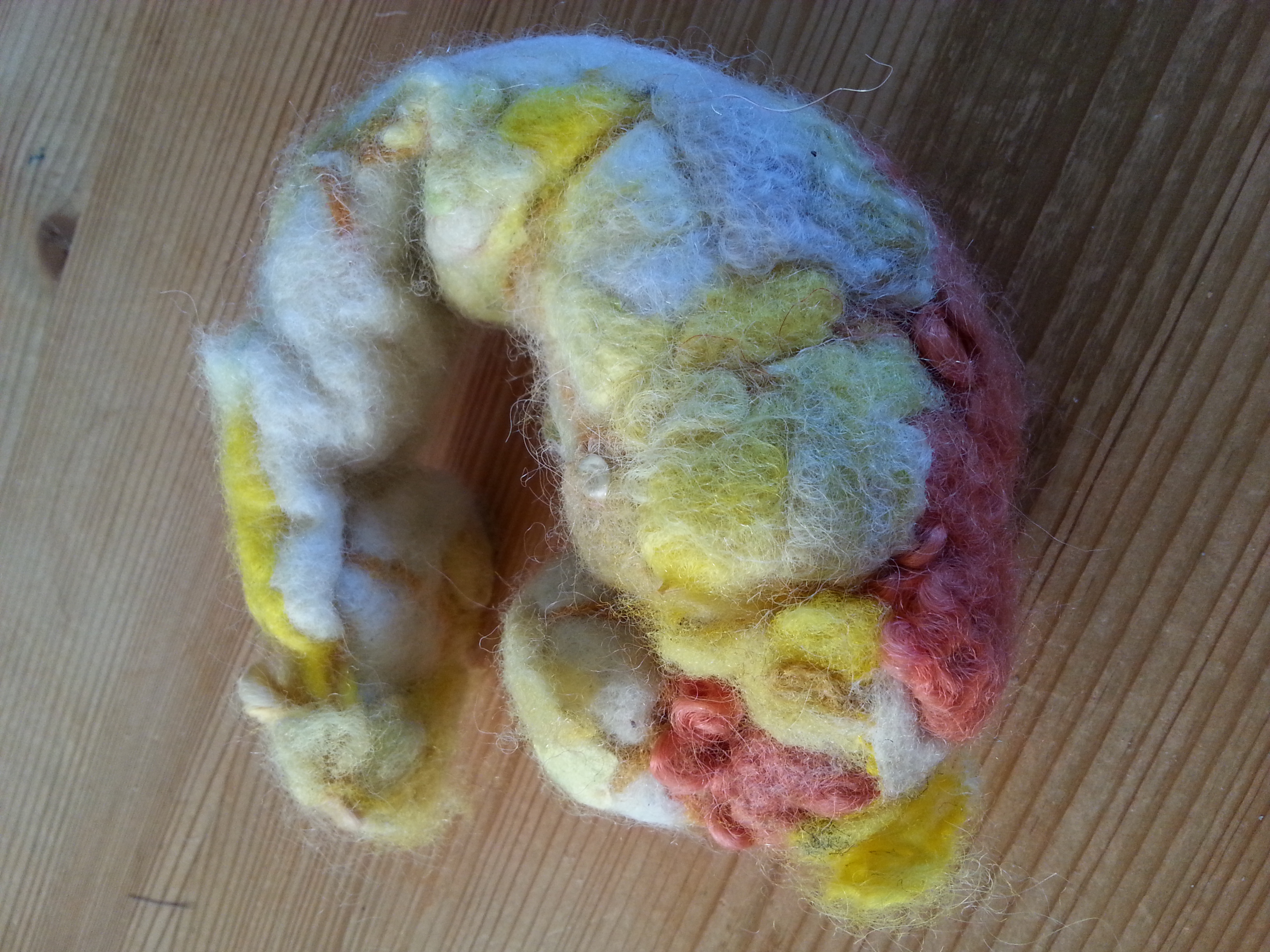For this exercise I selected a range of multi-coloured hand-dyed pieces of wool roving, fleece wool and yarn. All were chosen for their propensity to felt (ie, short to medium staple wools of various qualities).
I used two different strategies to contain the wool. The first was to stuff an old mesh onion bag, the second to stuff a length of nylon tights.
Each sample was tied to contain the fibres and create different shapes before being washed. The samples were subsequently tumble dried on a hot heat to complete the felting process.
Mesh Onion Bag
This sample produced a good, relatively firm ball shape. The mixed colours and textures in the felt materials add interest and the ball is soft enough to offer scope for working into with stitch, wire or other materials without, I think, significant distortion.
Length of nylon tights
The nylon tights were more elastic and I expected that they wouldn’t hold the shape of the felt to the same extent during washing. As it was, the finished piece was not quite as firm as with the stronger onion bag. Clearly there are limitations with regard to the shape of the nylon tights and the overall felt wasn’t quite as satisfactory as the mesh bag. However, this could be exploited to achieve certain shapes and could be stitched or worked into.
Conclusion
There are inherent limitations in this technique as the outer ‘container’ needs to be flexible to allow friction to reach the inner wool. I think this would be the same whether the felting is done in the washing machine or manually. This is not an issue with using the felt as a surface material (see Project 2 – Moulding from a Surface) since the felt always sits on the outside of the shape.
